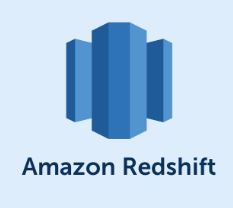Amazon Redshift is a fully-managed, petabyte-scale data warehouse service in the cloud. It allows you to run complex analytical queries against large datasets in a fast and cost-effective way. On the other hand, Amazon S3 is a scalable, durable, and highly available object storage service that allows you to store and retrieve any amount of data from anywhere on the web.
By linking Amazon Redshift to an S3 bucket, you can easily load data into Redshift from S3 and export data from Redshift to S3. In this article, we’ll walk through the steps to set up the S3 bucket and link it to Amazon Redshift.
Step 1: Create an S3 bucket
The first step is to create an S3 bucket if you haven’t already. To create an S3 bucket, log in to your AWS account and navigate to the S3 dashboard. Click on the “Create bucket” button and follow the prompts to create your bucket. Be sure to take note of the bucket name, as we will need it later.
Step 2: Create an IAM role
Next, we need to create an IAM role that Redshift can assume to access the S3 bucket. To do this, navigate to the IAM dashboard and click on the “Roles” tab. Click on the “Create role” button and select “Redshift” as the service that will use the role. Then select “Redshift – Customizable” as the use case.
In the next step, attach the “AmazonS3ReadOnlyAccess” policy to the role. This policy allows Redshift to read data from the S3 bucket. Give the role a name, such as “redshift-s3-role”, and create the role.
Step 3: Create a Redshift cluster
Now we need to create a Redshift cluster if you don’t have one already. To create a Redshift cluster, navigate to the Redshift dashboard and click on the “Create cluster” button. Follow the prompts to create your cluster.
Be sure to select the same VPC as the S3 bucket when you create the Redshift cluster. You also need to specify the IAM role you created in Step 2 in the “Additional configuration” section.
Step 4: Create an external schema
The next step is to create an external schema in Redshift that references the S3 bucket. To create an external schema, open an SQL client and connect to the Redshift cluster. Then run the following SQL statement:
CREATE EXTERNAL SCHEMA freshers_s3_schema
FROM data catalog
DATABASE 'mydatabase'
IAM_ROLE 'arn:aws:iam::7852541258523:role/freshers_redshift-s3-role'
CREATE EXTERNAL DATABASE IF NOT EXISTS;
This SQL statement creates an external schema named “freshers_s3_schema” that references the S3 bucket. Replace “mydatabase” with the name of your Redshift database, and replace “7852541258523” with your AWS account ID. Also, be sure to replace “redshift-s3-role” with the name of the IAM role you created in Step 2.
Step 5: Create a table in the external schema
Finally, we need to create a table in the external schema that points to the S3 bucket. To create a table, run the following SQL statement:
CREATE EXTERNAL TABLE freshers_s3_schema.mytable (
col1 varchar(100),
col2 integer,
col3 date
)
ROW FORMAT DELIMITED
FIELDS TERMINATED BY ','
LOCATION 's3://freshers-in/trainingdata/schema/';
trainingdata/schema/” with the S3 bucket and path where your data is stored. The table schema should match the schema of the data in the S3 bucket.Now you can query the data in the S3 bucket using the table you created in Redshift. For example, you can run the following SQL statement to count the number of rows in the table:
SELECT COUNT(*) FROM freshers_s3_schema.mytable;
Step 6: Export data from Redshift to S3
You can also export data from Redshift to S3 using the “UNLOAD” command. For example, to export the data from the “mytable” table to a CSV file in the S3 bucket, run the following SQL statement:
UNLOAD ('SELECT * FROM freshers_s3_schema.mytable')
TO 's3://mybucket/export/mytable.csv'
IAM_ROLE 'arn:aws:iam::7852541258523:role/freshers_redshift-s3-role'
DELIMITER ','
ALLOWOVERWRITE;
The IAM role should be the same role you created in Step 2.
In conclusion, linking Amazon Redshift to an S3 bucket is a straightforward process that enables you to easily load data into Redshift from S3 and export data from Redshift to S3. By following the steps outlined in this article, you can quickly set up the necessary components and start analyzing your data in Redshift.







